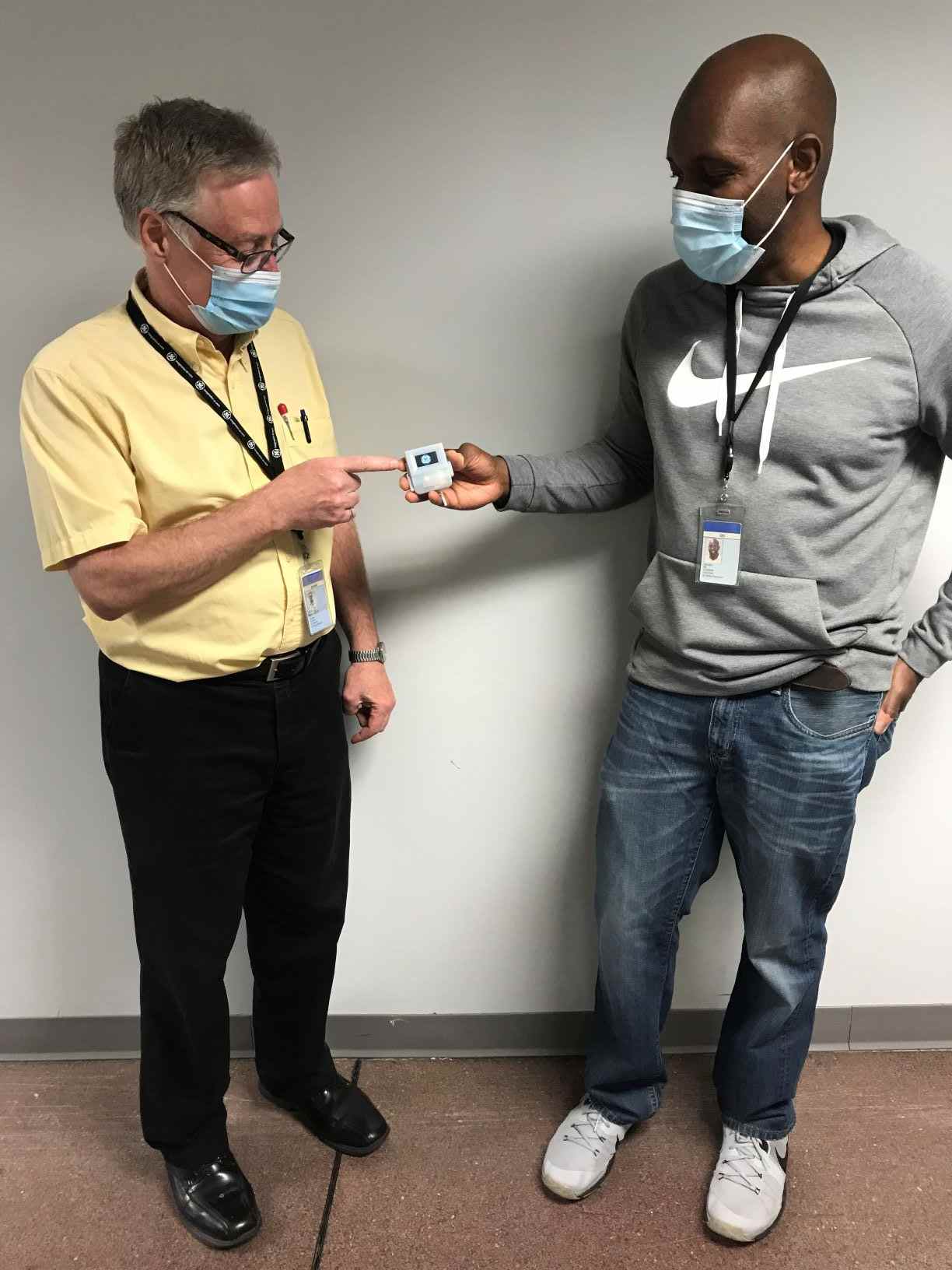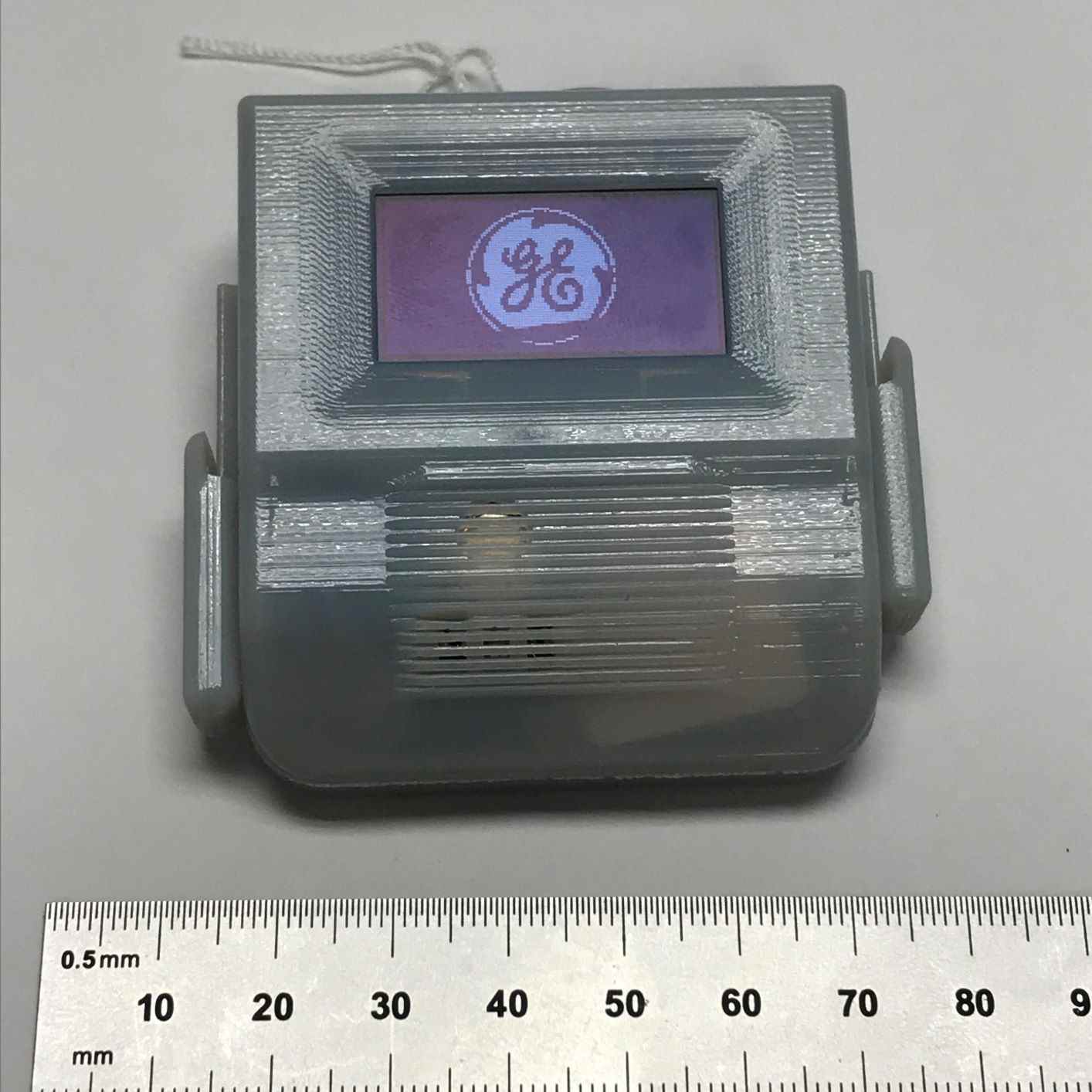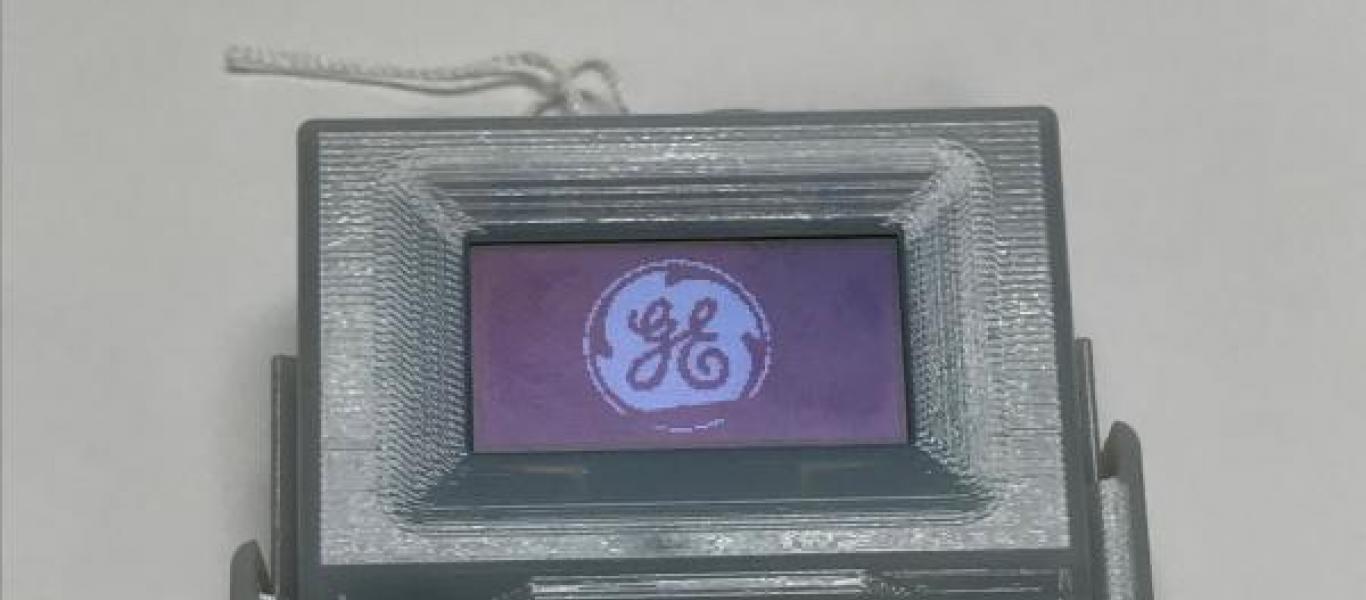- Will adapt GE’s proven multi-variable gas sensing platform already commercialized and being used in the Oil & Gas and adjacent industries
- New Compact Vapor Chemical Agent Detector (CVCAD) to build upon past sensing developments highlighted in Nature Communications and Nature Electronics Journals
- New device’s small size and wireless network connectivity will be designed for various defense applications in the field and pave the way toward other medical, consumer and industrial applications
NISKAYUNA, New York, June 2, 2021 -- Scientists at GE Research have won a five-year award from the Defense Threat Reduction Agency (DTRA) to develop a Compact Vapor Chemical Agent Detector (CVCAD) to provide first responders with an early warning of the presence of dangerous chemicals in all-weather and field-operational conditions.

Caption: GE Research team members Richard St-pierre (left) and Aghogho Obi (right) show an early CVCAD prototype that is ready for initial field tests.
GE’s handheld, wireless detector will instantly be able to detect if the air is safe to breathe, allowing for immediate and more informed decision making on whether it is safe to operate equipment or perform various field operations. The developed detector will be a detect-to-warn device, slightly smaller than a smartphone and will operate in handheld, wearable, UAV-integrated or wireless sensor network implementations. The CVCAD design combines the innovations in gas sensing with contemporary electronics design principles and their manufacturing capabilities to deliver the needed high levels of performance confidence without traditional trade-offs of large power, size, and cost.

Caption: A close-up view of GE's early CVCAD prototype.
Radislav Potyrailo, a principal scientist at GE Research and principal investigator, said, “The existing traditional gas detection systems required for such demanding defense applications are limited by the inherent trade-offs between instrument performance and a system’s power and size. We will be drawing from more than a decade of innovations and commercial success the GE team has had in multivariable gas sensors to deliver a breakthrough handheld, wearable platform that packs the same sensing power of the high-end analytical instruments."
The GE Research team’s has accumulated a strong body of work in multivariable gas sensors that have recently been validated with the commercial launch of such sensors for greenhouse gas emission monitoring and an on-going program with CDC NIOSH. The team’s work also has been reported in Nature Communications 2015 and Nature Electronics 2020 and was recently recognized by the Association for Sensor and Measurement Technology (AMA) with the Innovation Award 2021.
Potyrailo said, “This CVCAD should be an important step in reaching the desired performance of detect-to-warn devices for DOD applications. The high-performance capabilities of these devices will also be attractive to other applications ranging from medical to consumer and to industrial.”
Potyrailo noted that GE Research’s contemporary gas sensing platform reflects the cross-pollination between different scientific disciplines at the Lab and its visibility to an array of industrial applications. The Lab brings together expertise in microelectronics, materials science, packaging, and on-board machine learning, providing monitoring solutions for the modern world that range from the first responders for this DTRA program, to monitoring of high-value industrial assets, surveillance of environmental pollutants, indoor air-quality alarms, to breath analysis for disease biomarkers.
The GE Research team works to validate device performance in the field conditions and with early adopters. The team collaborates for building these CVCAD devices for field tests in diverse operational conditions.
We're here to solve your toughest problems.






